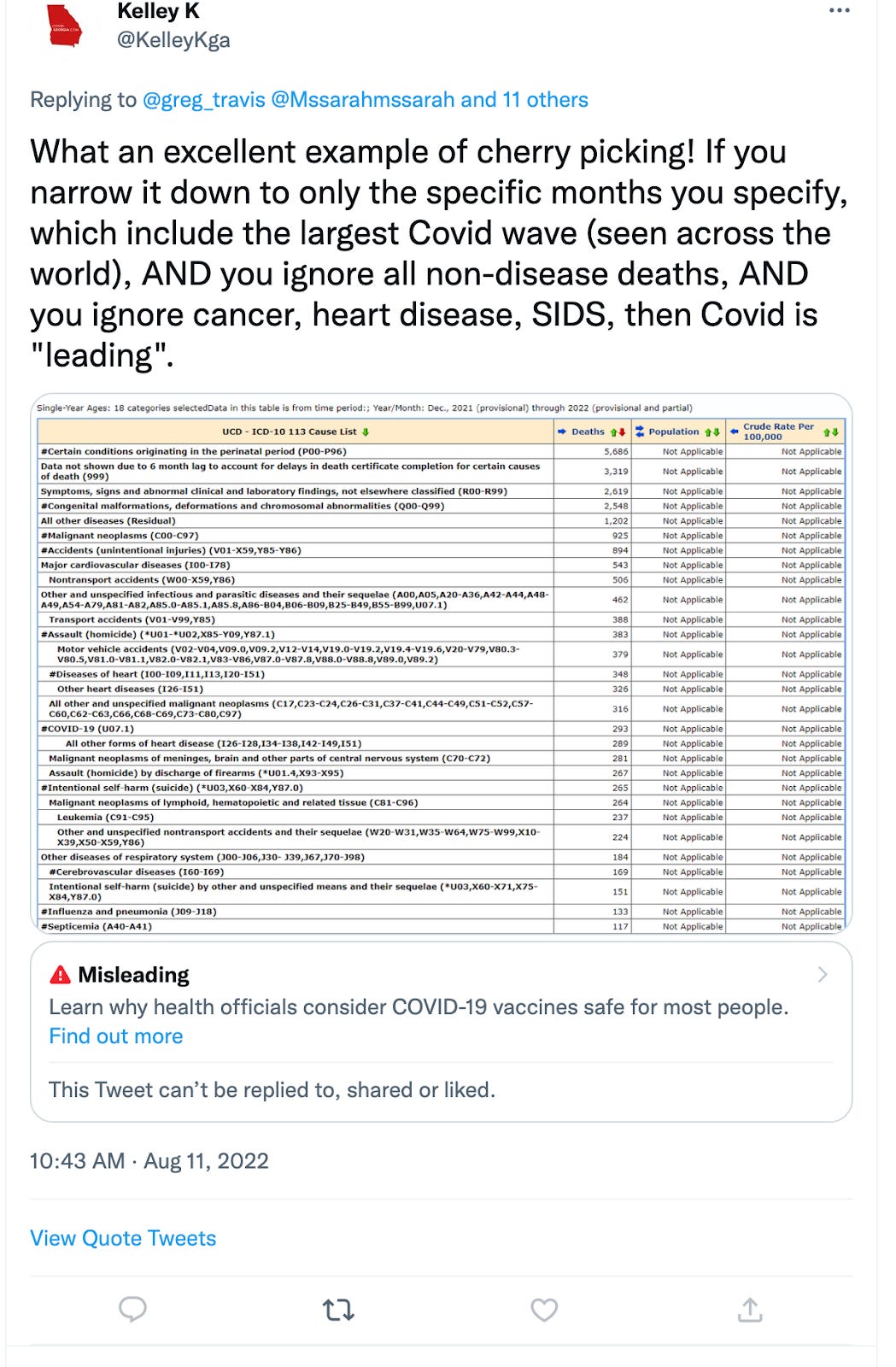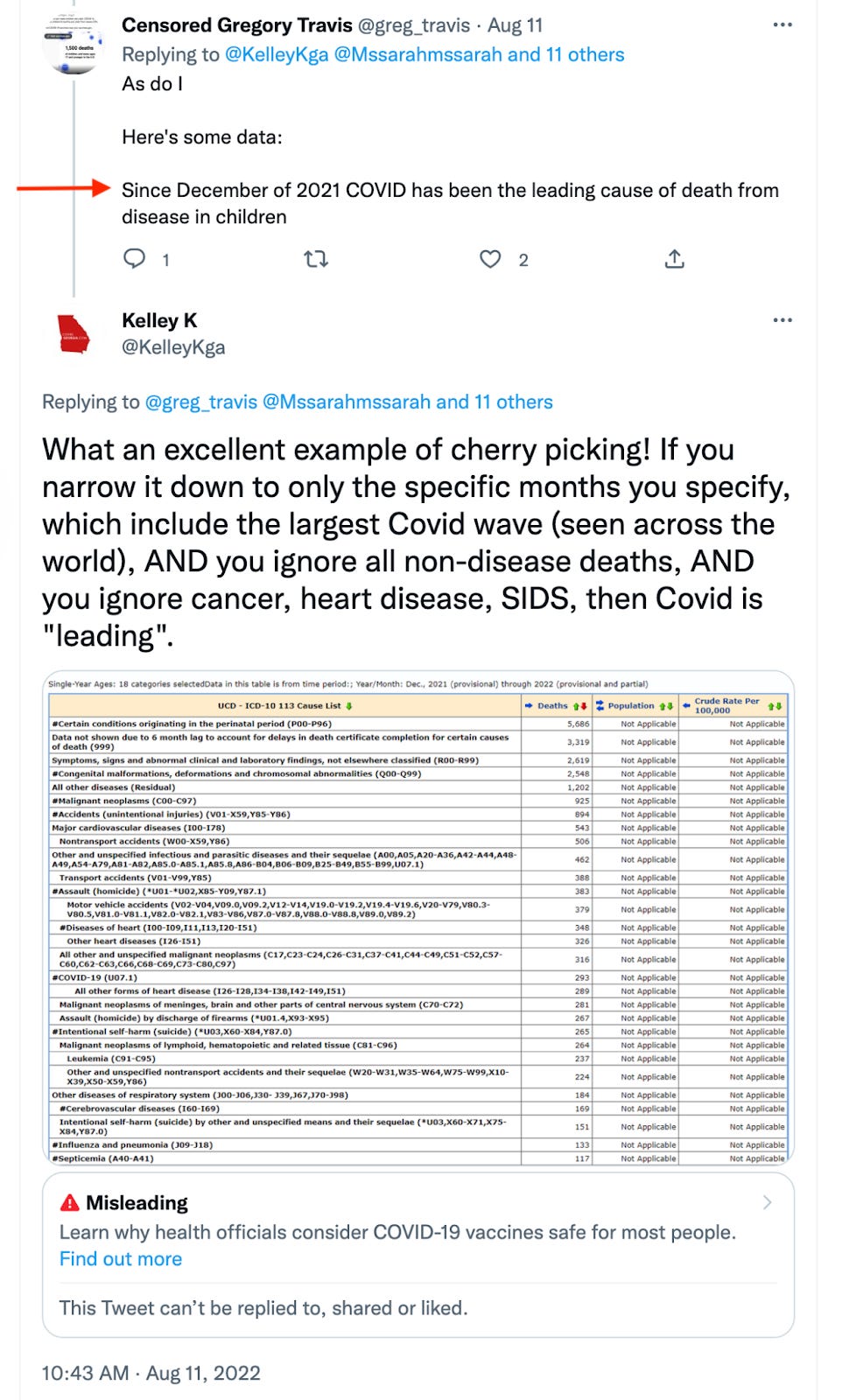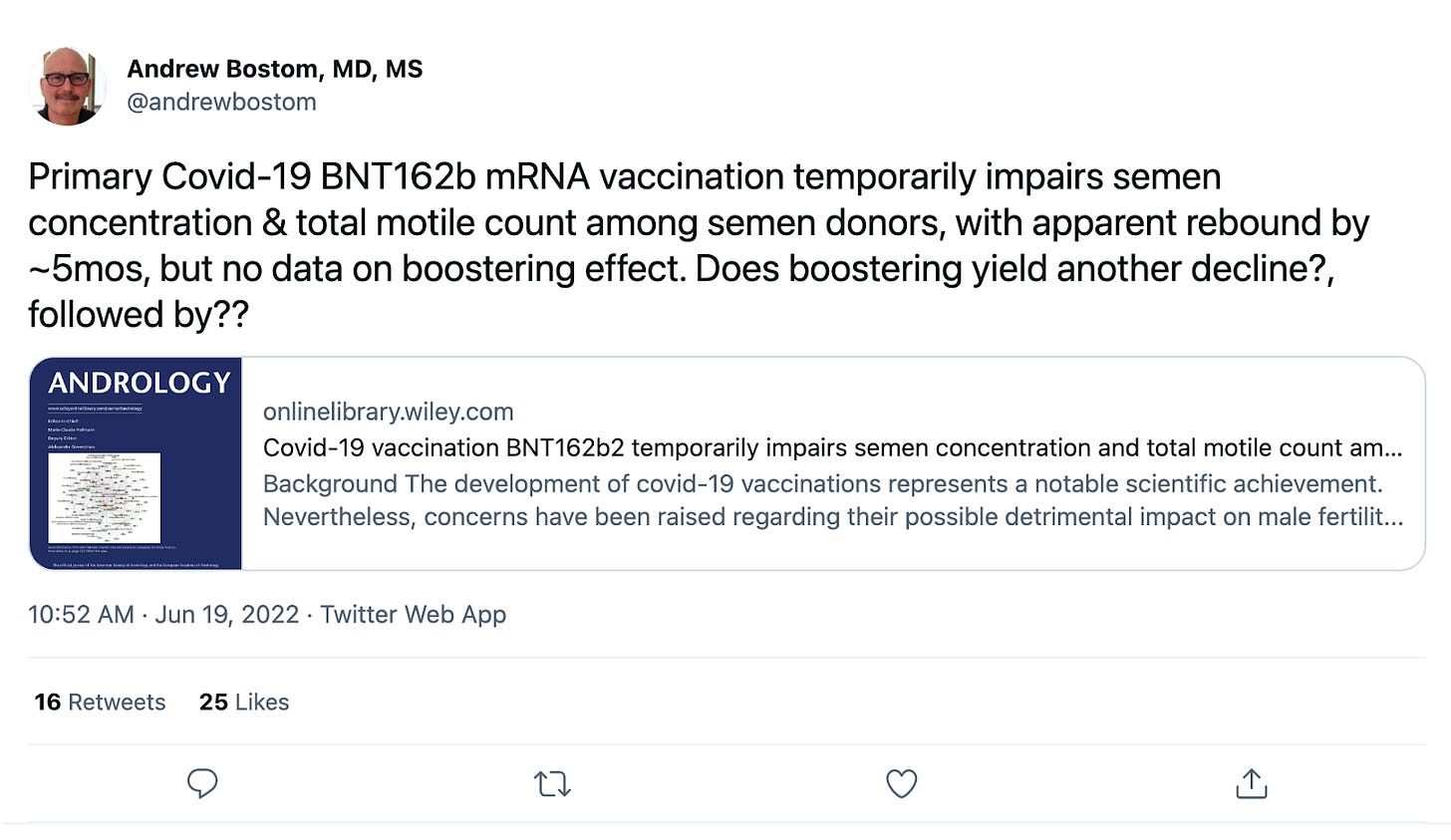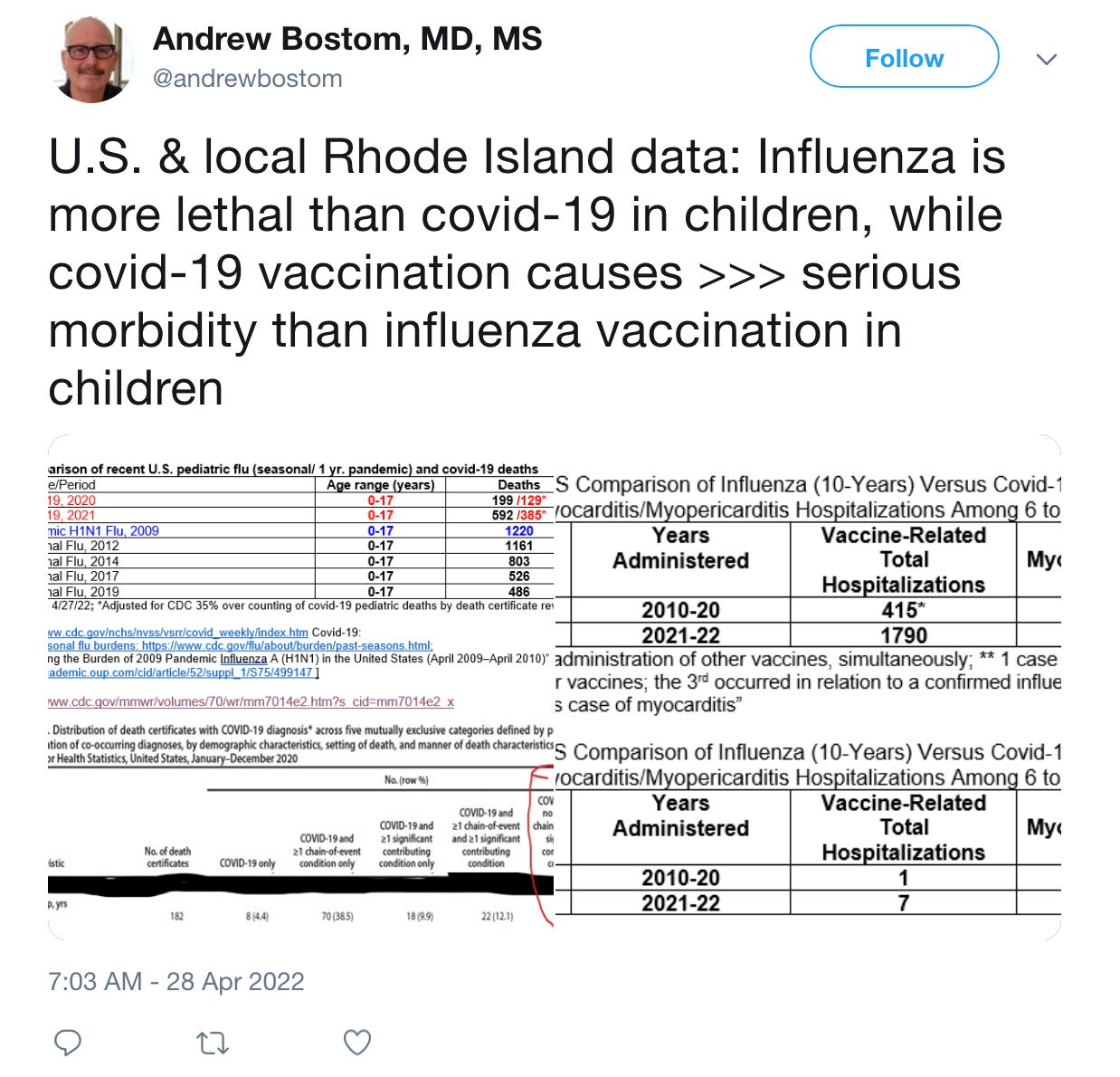The platform suppressed true information from doctors and public-health experts that was at odds with U.S. government policy, exactly as we allege in our Missouri v. Biden lawsuit.
Here is the second part of today’s Twitter Files drop by David Zweig. Part 1 was published earlier today here:
Here is the rest of the thread…
In my review of internal files, I found numerous instances of tweets about vaccines and pandemic policies labeled as “misleading” or taken down entirely, sometimes triggering account suspensions, simply because they veered from CDC guidance or differed from establishment views.
For example, a tweet by @KelleyKga, a self-proclaimed public health fact checker with more than 18,000 followers, was flagged as “misleading,” and replies and likes disabled, for showing that Covid was not the leading cause of death in children, even though it cited the CDC’s own data.

Internal records showed that a bot had flagged the tweet, and that it received many “tattles” (what the system amusingly called reports from users). That triggered a manual review by a human who—despite the tweet showing actual CDC data—nevertheless labeled it “misleading.” Tellingly, the tweet by @KelleyKga that was labeled “misleading” was a reply to a tweet that contained actual misinformation.

Covid has never been the leading cause of death from disease in children. Yet that tweet not only remains on the platform, it is without any sort of “misleading” label.
Whether by humans or algorithms, content that was contrarian but true, and the people who conveyed that content, were still subject to getting flagged and suppressed.
Sometimes this was done covertly. As reported earlier by The Free Press, Dr. Jay Bhattacharya, a Stanford professor of health policy who argued for focused protection of the vulnerable and an end to lockdowns, was secretly put on a Trends Blacklist.
But many instances were public facing. The author of the tweet embedded below is a physician who runs the Infectious Disease Ethics Twitter account. The tweet was labeled as “misleading” even though it was referring to the results of a peer-reviewed study that found an association between the mRNA vaccines and cardiac arrests in young people in Israel.

Andrew Bostom, a Rhode Island physician, was permanently suspended from Twitter after receiving multiple strikes for misinformation. One of his strikes was for a tweet referencing the results from a peer-reviewed study that found a deterioration in sperm concentration and total motile count in sperm donors following mRNA vaccination.

Twitter’s logs revealed that an internal audit, conducted by Twitter after Bostom’s attorney contacted the company, found that only one of Bostom’s five violations were valid.

The one Bostom tweet found to still be in violation of Twitter policy cited data and drew a conclusion that was totally legitimate. The problem was only that it was inconvenient to the public health establishment’s narrative about the relative risks of flu versus Covid in children.

This tweet was flagged not only by a bot but also manually, by a human being—which goes a long way to illuminating both the algorithmic and human bias at Twitter. “It seems grossly unfair,” Bostom told me when I called to share with him my findings. “What’s the remedy? What am I supposed to do?” (His account was restored, along with a number of others, on Christmas Day.)
Another example of human bias run amok was the reaction to the below tweet by then-President Trump. Many Trump tweets led to extensive internal debates at the company, and this one was no different.

In a surreal exchange, Jim Baker, at the time Twitter’s Deputy General Counsel, asks why telling people to not be afraid wasn’t a violation of Twitter’s Covid-19 misinformation policy.

In his reply, Yoel Roth, Twitter’s former head of Trust & Safety, had to explain that optimism wasn’t misinformation.

Remember @KelleyKga with the CDC data tweet? Twitter’s response to her in an exchange about why her tweet was labeled as “misleading” is clarifying:
“We will prioritize review and labeling of content that could lead to increased exposure or transmission.”

Throughout the pandemic, Twitter repeatedly propped up the official government line that prioritizing mitigation over other concerns was the best approach to the pandemic. Information that challenged that view—for example, that pointed out the low risk children faced from the virus, or that raised questions about vaccine safety or effectiveness—was subject to moderation and suppression.
This isn’t simply the story of the power of Big Tech or of the legacy press to shape our debate—though it is most certainly that.
In the end it is equally the story of children across the country who were prevented from attending school, especially kids from underprivileged backgrounds who are now miles behind their more well-off peers in math and English. It’s the story of the people who died alone. It’s the story of the small businesses that shuttered. It’s even the story of the perpetually-masked 20-year-olds in the heart of San Francisco for whom there has never been a return to normal.
If Twitter had allowed the kind of open forum for debate that it claimed to believe in, could any of this have turned out differently?
Source – https://aaronkheriaty.substack.com/p/twitter-files-covid-edition-part-31a
